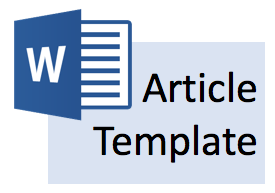DEVELOPING WEB-BASED TUTORIAL VIDEO LEARNING MEDIA TO IMPROVE STUDENTS ONLINE MARKETING LEARNING OUTCOME AT SMK NEGERI SUKOHARJO
Abstract
The aim of this research is to develop learning media using Online Marketing Video Learning Information System technology which can be accessed online, and improve the learning outcomes in Online Marketing learning at Vocational High School in Sukoharjo. The method used in this research is Research and Development methods that apply the media to students in grade X of Marketing Vocational High School, Sukoharjo especially in online marketing program. The research was examined by procedure steps of preliminary research, development and testing steps. The steps of video development cover collecting material, making storyboard, surveying, producing media, and applying media. The information system development steps involve Communication, Planning, Modelling, Construction and Deployment. Data analysis techniques applied in this research is a simple descriptive analysis. The research compares between the Pre test and Post test result to find out the result of study. This research was expected to increase the result of study in Online Marketings learning.
Full Text:
PDFReferences
Arsyad, Azhar. (2007). Media Pembelajaran. Jakarta: PT Raja Grafindo Persada.
Boscia, Marian W. & King’s College. 2001. Using A Web Based Tutorial Program To Enhance Student Learning. Developments in Business Simulation and Experiential Learning. 28.
Guy, Retta Sweat & Millicent Lownes-Jackson. 2013 Web based Tutorials and Traditional Face-to-Face Lectures: A Comparative Analysis of Student Performance. Informing Science and Information Technology. 10.
Heidi, Yeen-Ju Tan, Mai Neo. 2015. Exploring the use of authentic learning strategies in designing blended learning environments: A Malaysian experience. Journal of Science & Technology Policy Management. (6)2. 127-142.
Kirschner, P. A. (2002). Cognitive load theory: Implications of cognitive load theory on the design of learning. Learning and Instruction, 12, 1-10.
Merrill, D. C., Reiser, B. J., Ranney, M., & Trafton, J. G. (1992). Effective tutoring techniques: A compari-son of human tutors and intelligent tutoring systems. The Journal of the Learning Sciences, 2(3), 277-305.
Munir. ( 2008 ). Kurikulum Berbasis Teknologi Informasi dan Komunikasi. Bandung: Alfabeta.
Riyana, C. (2007). Pedoman Pengembangan Media Video. Jakarta: P3AI UPI.
Sugiyono. (2009). “Metode Penelitian Kuantitatif Kualitatif dan R&D”. Bandung: Alfabeta.
Sukmadinata, N. S. (2013). Metode Penelitian Pendidikan. Bandung : Remaja Rosdakarya.
Sutopo, Ariesto Hadi. (2003). Multimedia Interaktif Dengan Flash. Yogyakarta: Graha Ilmu.
Urbani, Y.H. & Purnama, B.E. (2012). Produksi Film Indie Komersial “Aku Cinta Indonesia – Generation” Berbasis Multimedia. Indonesian Jurnal on Computer Science Speed. 9 (3) 118.
Viel C. C., K. R. H. Rodrigues, E. L. Melo, R. Bueno, M. G. C. Pimentel and C.A.C. Teixeira. 2014. Interaction With A Problem Solving Multi Video Lecture: Observing Students From Distance And Traditional Learning Courses. International Journal of Emerging Technologies in Learning .9(1) 39-46.
Refbacks
- There are currently no refbacks.


